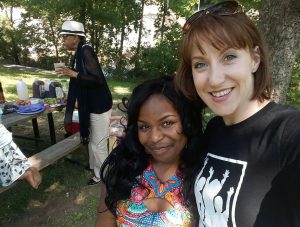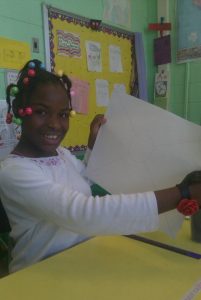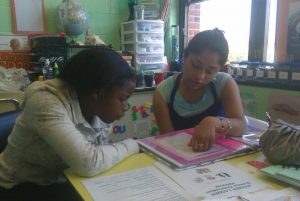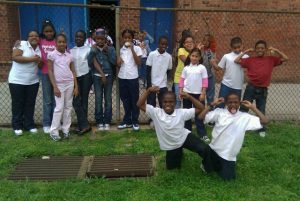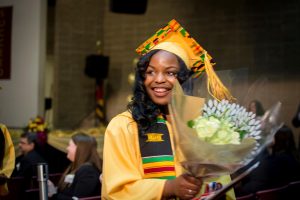Tag: Literacy Narrative
Simple Steps to a Challenging Journey
Shannon McNulty
Dr. Licastro
Simple Steps to a Challenging Journey
My name is Shannon McNulty and I am just beginning my freshman year at Stevenson University in Owings Mills, Maryland. I am from Newark, Delaware and recently I graduated from the Charter School of Wilmington in Wilmington, Delaware. I am now a student athlete at Stevenson studying nursing while playing on the women’s soccer team. Being a student athlete helps me to better manage my time and encourages me to be a hard worker all of the time. I am the youngest of two kids in my family of four. My older sister is a senior in college studying sports and exercise science, she attends Coastal Carolina in Conway, South Carolina. Both of my parents attended college, my mom graduated with a degree in business and my dad received a degree in chemical engineering. Since I have an older sister and grew up with her, I seemed to learn faster than others because I always wanted to be doing what she was. I was constantly wanting to know what she was doing and trying to do the school work she had as well as read all the books she had rather than my own. However, throughout my many years of school I am typically a person who prefers science and math, rather than English and humanities classes. So, as the years went on I enjoyed reading and writing much less than when I was younger. This is a picture of a Leap Frog.
This is a picture of a Leap Frog.
The year of school that I really recollect is 4th grade. In 4th grade I had a teacher named Mrs. Fendell, she was a super sweet teacher that wanted nothing more than for her students to succeed, her smiling face every morning made me enjoy school every day. She got not only me, but the whole class engaged in writing and made us really enjoy it. I learned so much from her, but the most important thing I learned was how to begin writing a paper. She used a special method called the sandwich method to help us grasp the concept. The sandwich method tied each ingredient to a specific section of the paper. The two pieces of bread on each end represented the beginning as well as the conclusion. The middle of the sandwich contained the meat, cheese, and lettuce, they were the body paragraphs. Occasionally there would be tomato added to the middle of the sandwich when we needed an extra body section for our paper. To make the concept easier in the beginning my teacher would give us two brown sheets of paper for the bread, a tan piece of paper for the meat, an orange sheet of paper for the cheese, a green piece of paper for the lettuce, and a red piece of paper if there was a tomato section in our paper. This not only helped my whole class earn to write but was a fun way to get everyone engaged in writing papers. We would turn our colored sheets of paper into a mini book that ended up being our paper. Eventually we got rid of the colored sheets of paper and just began writing it all together on one sheet since we had developed our writing further. It helped us understand the concept of a structured essay and carry that with us in future school years. It got us very involved with our writing, which I had never been able to do before, since it incorporated a fun method into writing and made things simpler so we could learn rather than just jumping into things. I will always remember this memory because it was when I finally learned to give structure to writing rather than just jotting things down on a piece of paper.
A few years later, when arriving in middle school I remember taking nagging vocabulary tests every single week. At that point, I never understood how they were helpful and what they were doing for me. I continued to study for them each week but I never retained any of the words after taking the vocabulary tests. The ongoing vocab tests happened weekly all the way through high school. However, in ninth grade one day we came into class and my English teacher named Ms. Mancari asked us to write an essay using fifty percent of the words we had learned. This seemed to be a very simple task until she informed us that she was going to take our vocab books while we did the assignment. We were expected to remember the words we had learned along with their definitions. This daunting task seemed impossible considering ever since sixth grade I had only ever learned the words for the vocab test and then immediately forgotten them. The whole class seemed to be in the same situation as me, everyone was very nervous for the assignment and we had no time to prepare. She ended up not grading the assignment, instead she used it as a lesson we should learn from. From then on, I studied my vocab words in order to know them for the future rather than just short term for the test. I now am able to use those words every day and use them in my writing. If it had not been for my ninth grade teacher, I would have gone through the rest of my high school career and potentially college just learning various words for tests. Increasing my vocabulary has greatly improved my writing abilities and it was all thanks to the lesson learned in my ninth grade English class. 
Many things have influenced my writing and reading skills but these specific examples mentioned were the most influential. They have gotten me to my current level and most importantly to college to further my education. I will continue to use these skills I’ve learned throughout my college career and will also carry these skills into my desired field of nursing. I will need to constantly be writing in patients records as well as reading medical histories. I would never be able to do this without the basic skills I have acquired over the years. Despite that, many medical terms and new vocabulary will need to be learned in this new field of study. This is only the beginning, I have many new things to learn and lots of other things to improve upon both in college and in the medical field. However, you have to learn the basics in order to get to the more complicated stuff. My many years of school has taught me several very useful writing and reading structures and strategies to help me on my journey through nursing school as well as further down the road when I begin my career as a nurse.
“LeapFrog Original LeapPad Learning System from 2004: Toys & Games.” Amazon.com: LeapFrog Original LeapPad Learning System from 2004: Toys & Games, www.amazon.com/LeapFrog-Original-LeapPad-Learning-System/dp/B00003GPTI, September 9, 2017.
“Sadlier School School Catalog.” Products List, schoolstore.sadlier.com/ProductsList.aspx?CategoryID, September 9, 2017
http://nursejournal.org/, 2017 NurseJournal.org |. “The 5 Most Common Mistakes Made By New Nurses.” 2017 NurseJournal.org, nursejournal.org/articles/the-5-most-common-mistakes-made-by-new-nurses/, September 9, 2017.
A Mouse And a Cookie
On October 13, 1999, Melanie and Michael Weisgerber had their second kid together. My name is Ashlyn Weisgerber. I’m now seventeen, freshly graduated from Liberty High School and a freshman at Stevenson University. I have a sister, Kait who is 22, and a half brother, Sam who is 25. Both my sister and I have played softball for a very long time, I thoroughly enjoy it. I also really enjoy reading.
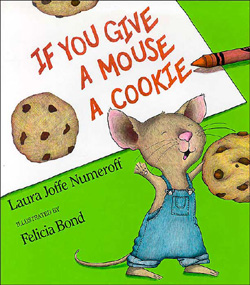
When I was about four, my favorite book was If You Give a Mouse a Cookie. It had a green and white cover with red writing and a mouse in blue overalls with a cookie. I would look through the book and read it with my mother or grandmother. When we’d read together, I’d look at all the pictures. Soon, I’d look through it by myself. There were two lines on each page with a picture depicting what the words were saying. This book sparked my love for reading.

My elementary school, Eldersburg Elementary, was in a small town in Carroll County. It was made of old maroon bricks that were chipping on the outside; the inside consisted of cinderblocks that were painted a bright white. Our mascot was a green, friendly, smiling dinosaur. This is the place where I had learned the basics of reading and writing. It started in kindergarten and went through fourth grade with these things called site words. These were little index cards that we were to memorize over a week. These were to help pick them out in books. In fourth grade, it turned to definitions. My kindergarten teacher, Mrs. Flannery, would pass out about fifteen each week. Mrs. Flannery was a tall woman with short, straight, light brown hair. Her room had round tables for us to sit in groups. In the back of the room were cubbies for us to put our book bags in, along with a rug for us to sit around and read. It was a very fun, kidfriendly room with bright posters and decorations.
In third grade, I had a teacher named Mrs. K. She was a relatively short woman with thin, straight, brown hair. Her room had desks set up into groups of four to make a table with a white board in the frontof the classroom, her desk was to the left when you walked in. Every morning on the white board would be a grammar warm up, we had to correct the sentence on the board. She also taught me cursive. She’d give us these templates that had the cursive letter, then next to it would be a dottedversion of the word that we could trace. Underneath those were empty lines to practice on once we felt we could do it without tracing. She’d also give us vocabulary tests weekly. If we did well enough on them she’d give us War Heads. Everyone always looked forward to the vocabulary tests.
In fifth grade, I had Mrs. Chiaramonte, she was my English teacher. She had short, frizzy, red hair and wore small rimmed glasses. Her room was fairly big; when you walked in there were desks set up into rows facing the white board, her desk was in the front to the right with a bookcase in front of it. She’d have us do these reading logs every Friday on what we read over the week. These were in blue folders with ‘Reading Logs’ and our name in the top left hand corner. Inside were templates; the top was a summary of what we read, then halfway down the page it turned into a rating and if we’d recommend this book to others. She alsohelped me remember that a lot wastwo words and not one; in all of my papers I had wrote it as one word. She had written upon the board and point it out to me and that helped me remember it was two words. Lastly, she’d also have us do warm ups of grammar corrections; she’d have sentences on the overhead that we’d have to fix.
In ninth grade, I had Mr. Flemming; a short man with black hair, glasses and a goatee. He’d usually always wear liberty pride clothing and would always relate things to sports since he coached two sports at our school. When walking into his room, he had tables set up from five desks, there was a white board in the front of the room along with his desk and laptop. Over my freshman year in English, we read Grendel and Beowulf. While reading these, he’d have us do REN1N2S; this stood for reasons for the chapter, examples, names, numbers and senses. This was to help us
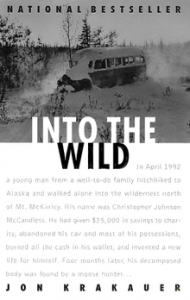 recognize important details in the book and understand the purpose of the book. My senior year I had Mr. Flemming again along with his student teacher Mr. Erdmann. That year we read
recognize important details in the book and understand the purpose of the book. My senior year I had Mr. Flemming again along with his student teacher Mr. Erdmann. That year we read
. We would have discussions as to why the character did what he did and recognize the importance of the story. We also practiced more grammar with Mr. Erdmann and applied that to the sentence structure in the book.
All of these things and people have helped me become he reader and writer I am today. With all of the knowledge, help, and tips I’ve been given, I can make it through college and into my career. When I get out of college, I’d like to be a forensic scientist, and as a forensic scientist I’ll have to write reports and share what I have found with others in a professional way. I’ll continue to grow and prosper as I go through college and learn much more. These important figures and tools have helped me and will continue to help me throughout my life.
Citations:
If You Give A Mouse A Cookie, Laura Numeroff 1986
Eldersburg Elementary, Carroll County Public Schools 2017
Into The Wild, Jon Krakauer, 1995
Danielle’s literacy narrative
 Coming from a big family, I’ve always had the greatest support system. When spending time with my family and friends, I’m constantly learning something new every day from others. I’d like to describe myself as a social butterfly, outgoing, and adventurous. One thing I love more than anything is traveling because that’s the best way of learning. Constantly, I am learning something every day. Although, not everyone knows how I learn. Throughout my life I have had many difficulties with learning, mainly focusing on reading and writing. Many people have helped me through different ways of teaching. Without these people, I wouldn’t be who I am today. In some ways, I am forever grateful I do have this challenge because I’ve learned the benefit of hard work and how to overcome obstacles that stand in my way. Nothing comes easy, it takes effort and determination. I like to believe this challenge does not define who I am, but it is part of me.
Coming from a big family, I’ve always had the greatest support system. When spending time with my family and friends, I’m constantly learning something new every day from others. I’d like to describe myself as a social butterfly, outgoing, and adventurous. One thing I love more than anything is traveling because that’s the best way of learning. Constantly, I am learning something every day. Although, not everyone knows how I learn. Throughout my life I have had many difficulties with learning, mainly focusing on reading and writing. Many people have helped me through different ways of teaching. Without these people, I wouldn’t be who I am today. In some ways, I am forever grateful I do have this challenge because I’ve learned the benefit of hard work and how to overcome obstacles that stand in my way. Nothing comes easy, it takes effort and determination. I like to believe this challenge does not define who I am, but it is part of me.
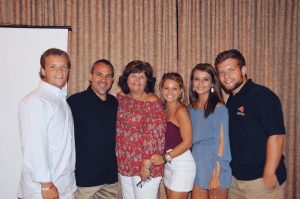
When you are seven years old and you’re told that you have to memorize how and what more than 100 words mean was one of the most terrifying things to be told as a first-grader, at least for me it was. I was haunted by the yellow folder filled with verbs, adjectives, nouns, and pronouns which were just the main words that needed to be memorized. I remember crying to my mother explaining that I’d never be able to read because I could not do it. This was just too hard. My mother always had faith that I could do anything I wanted. Every night with my mother we would review these words each column at a time. Flash cards were always helpful when it came to memorizing words and definitions. These flashcards must have done something right because no where did I think I was capable of ever learning all these words.
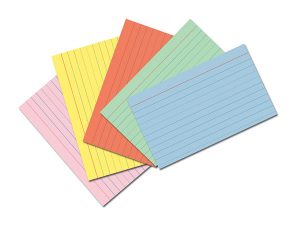
For as long as I could remember, going as far back to the second grade, I have been tutored. Every Monday after school my parents drove me to Ms. Pedicord’s house located in Towson, MD, right off the beltway. She tutored me throughout my elementary and middle school days at St. Ursula’s School which is located in Parkville, MD; not too far from each other. No matter how bad Monday’s were I remembered always looking forward to going to Ms. Pedicord’s after school because I knew she was helpful to me in many ways. In her house, which is where lessons were held, she helped me with my reading, writing, and math. Pulling into her driveway and waiting eagerly for the next student to come out, I was nervous. I never enjoyed learning since I knew I was not good at it, but Ms. Pedicord helped me in a way that no other teacher could at St. Ursula’s school. She gave me hope that I could be better. Ms. Pedicord had a different technique of teaching students who learn differently. As I walked into her door I was always greeted with a huge smile and hello. That was always comforting for me to know that I was in a safe space. As I got my materials out Ms. Pedicord always had an after-school snack for me waiting, Annie’s bunny cereal or sometimes cookies. They were the best snacks, I even told my parents they had to get it from the store for me. Anyway, Ms. Pedicord was a big fan of color coordinating things, such as highlighters and colored pens. When reading and writing, highlighting and annotating the text in different colors was an important way of how I learned. This was a great way for me to remember the most important things in a text and being able to understand things. She was also a fan of graphic organizers. Linking and putting things together in bubbles always made sense since I am more of a visual learner. The graphic organizers made it incredibly easy to understand people, places, and events.
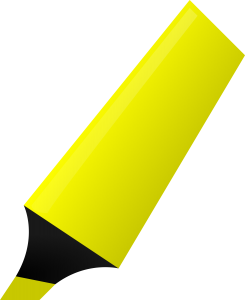
Since I was not fond of reading and never enjoyed reading summer books I would always prefer listening to an audio book. Renting an audio book from the library happened frequently, since I didn’t like reading to myself. At times, I could never understand what I just read, perhaps because I was too focused on what I was actually reading instead of comprehending the texts. Or it even could have been not being able to sit still and focus for more than fifteen minutes. Downloading the book onto my ipod I was able to listen to the stories on the go. With the audio book, it made reading the text more understandable as I read along with the book. At times, I would come across something I might not have understood and was able to take note and look it up. With an audio book, it helped me with how things should be pronounced while listening to the speaker. I am grateful for audio speakers because they were extremely helpful to me as a child and still until this day I use them.

In my junior year of high school at The Institute of Notre Dame. I had a young teacher Ms. Pomplon who taught British Literature, which also was probably one of my favorite classes I’ve taken. She knew how to make it interesting with different activities and ways of teaching it, but still kept the lesson very informative. But before class ever started we always started with a warm up, which included a notebook and pen or pencil. She began to give the class a situation and we would write our own story about it. The outcome of the situation could be whatever we wanted it to be. We began to use sensory detail and became incredibly creative with the stories. It was something that I really enjoyed because we completed it every class and I was able to see how much my writing skills had improved. As we wrote, she played the most soothing music, one I liked the most was “To Build a Home” by The Cinematic Orchestra. Until this day, when I write, I will always play this song in the background. She definitely had her own techniques of how and what you should do while writing and she helped me in so many ways with a soothing, relaxing song.
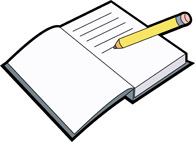
The struggles I endured have made me into a more determined and well-driven student. I am so fortunate to have been surrounded by a supportive and loving family and community and had been offered all the wonderful helping hands. Still until this day, and every day so on, I am still learning how my reading and writing could be better. Something I have always wanted to do for myself is blog. I believe that through blogging, I will be able to learn from my own writing and see who I am as a person. I hope one day I will be able to have the confidence in myself and in my writing to pursue this minor goal of mine.
citations:
Trevi Fountain: Danielle Commodari, 2017
Family picture: Danielle Commodari, 2017
Open notebook with pencil: classroom clipart, 2017
Slate’s audio bookclub: Robert Nuebecker, September 2017
yellow highlighter: Matheod, January 2014
Note cards: Clipart life, 2016
A life Changer
On June 10, 1998, I, Jacqueline Ndayizeye, the daughter of Nyawenda Jonasi and Capitolina Ndayibanje, was born in Mukugwa in a refugee camp in Tanzania. My last name means “Imana wizeye” translating to “Worshiping the glory that God gives in life”. My family cherished everything that they had and always helped others, even if they did not have much themselves. As I started to grow up, I realized the capability of going to school in Tanzania was out of the question as my family didn’t have enough money to put me in school. My father tried and I started preschool, but I didn’t get to finish.
When my family and I came to America in the middle of spring 2004. We barely spoke any English let alone knowing how to read and write. The International Refugee Committee (IRC) and the Refugee Youth Program (RYP) was able to take us in and help us settle in America. The environment and the community was very new to me. It was filled with different types of people, whereas before I only knew people like me. But in America, it was like a rainbow of so many different things. It was very shocking to me. I remember the first time I saw snow, which I had never seen before in my life. I thought it was another way of how America received rain. It was so white, like clouds in the sky. I didn’t know how cold it was until I couldn’t feel my feet. I cried out to Mama that it felt like a bee sting.
Nevertheless, the RYP helped put us into schools. My aunts and uncles, and myself. I was so excited to go to school. I wanted to learn so much even though I didn’t speak any English. I knew it was going to be hard to communicate but that didn’t come to my mind at that time. The excitement was exotic.
As I entered the school building, I felt a rush of light and noise far ahead. Children like me, and others older than me, pushing and shoveling. I thought to myself why are they in such a hurry. Ms. Kursten who worked at the RYP took my hand and lead me into a classroom. She bent down to me and started saying things that I had no clue meant. The only thing I could do was stare into her mouth and see how her mouth moved every time she spoke. She then smiled and I kindly smiled back. I stood in the corner while she was talking to this lady. She was middle aged and wearing a long black skirt with a white shirt, her lips colored in red, short black hair, and I remember thinking she was tall as a tree. I looked around the room and I saw different kinds of letters hanging off the wall, stickers, game boards and two desks. I soon found out that the lady’s name was Mrs. Jordanna and that she was my ESOL(English as your second language) teacher.
Mrs. Jordanna taught me a lot of things and I began speaking English little by little. As I learned how to write, she gave me words to trace and told me to sound them out. She would point to an object and say words that I believed was that object. I would then try to repeat after her. It took me a while to process everything but I was so excited that I would always go home and show my family what I learned at school.
I would turn on the television and watch my two favorite shows, The Magic School Bus and Teletubbies. In those shows, there were things that I was able to manipulate and I would go to school the next day and try to say the new words I learned. But, some of them I couldn’t pronounce correctly and other kids would laugh at me, so I kept my mouth shut.
There were so many ways I was able to learn to read and write. Since English is not my first language it was very hard. It took me couple of years to learn it, and I still have trouble from to time. But through the years, kindergarten to fifth grade to be exact, I had ESOL which was helpful. In order to pass the ESOL class, I had to take a test and unfortunately, I didn’t pass. But, my time in ESOL gave me the opportunity to go to a boarding school. In that boarding school, they didn’t have any ESOL classes so I struggled. In English class I strived to do better with my reading and writing. I started to read lot of books, write poetry, journaling, and asked a lot of questions. Reading and writing is still a struggle but I can say that having that foundation of ESOL class, teachers and mentors who have helped me help me overcome those struggles. I am able to help my family also, and help another younger refugees learn how to read and write.
This process of learning how to read and write really changed my future forever. It developed my skills and my way of life from half way around the world. It also opened my mind into a new dimension of creativities and opportunities. Without the help from the teachers and mentors and the IRC/RYP, I wouldn’t be sharing this story. They are within my circle and I won’t let them go. It showed me what I can do and what I can accomplish. The future is in the air of success and giving back to the world.

